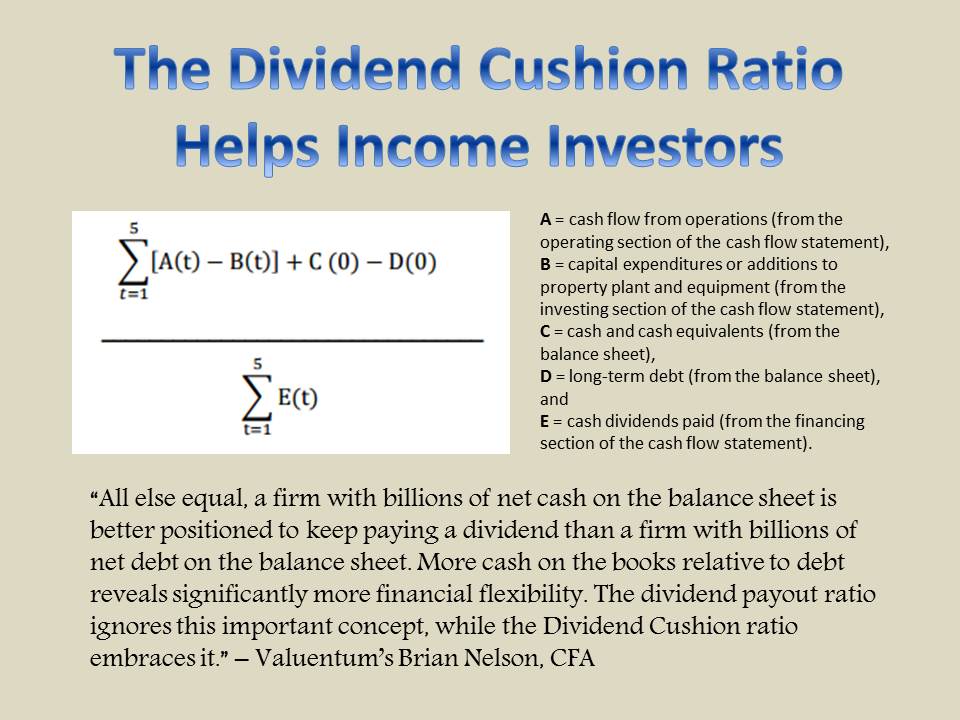Member LoginDividend CushionValue Trap |
Fundamental data is updated weekly, as of the prior weekend. Please download the Full Report and Dividend Report for
any changes.
Latest
Valuentum Commentary
Mar 5, 2020
2,350-2,750 on the S&P? Could the Coronavirus Catalyze a Financial Crisis?
Image: We think a rather modest sell-off in the market to the target range of 2,350-2,750 on the S&P 500 is rather reasonable in the wake of one of the biggest economic shocks since the Global Financial Crisis. The chart above shows how far markets have advanced since 2011, and an adjustment lower to the target range of 2,350-2,750 is rather modest in such a context and would only bring markets to late 2018 levels (note red box as the target range). The range reflects ~16x S&P 500 12-month forward earnings estimates, as of February 14, adjusted down 10% due to COVID-19. When companies like Visa talk about a couple percentage points taken off of growth rates, one knows that the decrease in spending is very real, and we’ve yet to see the brunt of the impact yet. We have written extensively about our valuation expectations and target on the S&P 500 in the past, so please don’t mistake this reference as the extent of our thinking. We do not think a sell-off on the S&P 500 to the range is 2350-2750 is too far-fetched, as it really only gets the broader markets back to late 2018 levels (a mere year ago or so), and reflects a reasonable 16x forward expected earnings, as of February 14, hair cut by 10% as a result of the impact of COVID-19. The Fed put may not matter much anymore in the wake of this “biological” crisis, and increased fiscal spending may not be enough to offset what could be sustained weakness across the global economy. Mar 4, 2020
A ~0.1% Probability Since 1896
Image Source: Wikipedia Commons. "The market crash in the past two weeks has been truly historic: its probability of occurrence is ~0.1% since 1896; the velocity of the plunge and of the VIX surge is the fastest on record; and the 10-year [Treasury yield] is at all-time low. (Hao Hong, BOCOM International, a subsidiary of Bank of Communications, March 1)" -- Howard Marks' memo, Nobody Knows II Mar 3, 2020
Fed Cuts 50 Basis Points, Expect More Market Volatility Ahead
Image Source: FOMC. The emergency 50-basis point Fed rate cut announced March 3 was largely expected by the marketplace in light of growing economic concerns due to COVID-19, but it does nothing to immunize against COVID-19 and little to stabilize the situation. We continue to monitor the situation closely, and we expect ongoing volatility in the coming days and months as the situation with COVID-19 remains fluid. Having moved to defensive positions in both the Best Ideas Newsletter portfolio and Dividend Growth Newsletter portfolio in January and having capitalized on the “crash protection” put, we are preparing for our next move. For now, we’re watching and waiting, and we encourage readers that have not yet picked up their copy of Value Trap to do so. Mar 1, 2020
COVID-19 Crisis Intensifies
Image Source: CDC. Coronavirus Disease 2019 (COVID-19). The world is being challenged today by what some including Bill Gates believe might be a "once-in-a-century pathogen." We do not know the eventual outcome, whether the impact of this illness ends up being as profound as the Spanish Influenza of 1918-1919 (which inflicted a death toll in the tens of millions), but we maintain our view the markets have yet to come to grips with the impact of COVID-19 on economic activity and potential ramifications on the global economy and the banking system. What is currently a "biological" crisis may turn into an all-out global financial crisis, one that could end up worse than the 2008/2009 mortgage meltdown. Instead of toxic mortgages putting a halt to lending activity across the globe as they did over a decade ago, today's crisis stems from an illness that very few of the top health officials in the world know much about--not only in the duration of COVID-19's incubation period, but also in how easily it seems to be spreading, and how deadly it may eventually become, particularly if health systems around the world become overwhelmed. Feb 27, 2020
Has the Stock Market Crash Begun?
Image: CDC. Transmission electron microscopic image of an isolate from the first U.S. case of COVID-19, formerly known as 2019-nCoV. The spherical viral particles, colorized blue, contain cross-section through the viral genome, seen as black dots.According to the latest Situation Report from the CDC, dated February 25, there are now more new cases reported from countries outside of China than from China. Globally, there are currently 80,000+ confirmed cases in nearly 40 countries, with China, South Korea, Italy and Iran the major hotspots. Up until now, investors have been anxiously waiting for the other shoe to drop (i.e. community spread in the United States), with the CDC even saying, “It's not so much a question of if this will happen anymore, but rather more a question of exactly when this will happen and how many people in this country (United States) will have severe illness.” Well, that “when” is now. The CDC just confirmed February 26, 2020, a possible instance of community spread of COVID-19 in the US. Feb 24, 2020
ALERT: Adding Market Crash 'Protection,' Removing MSFT, BKNG
Image source: Centers for Disease Control and Prevention. We're adding out-of-the-money put options to both the Dividend Growth Newsletter portfolio and Best Ideas Newsletter portfolio. We're removing Microsoft from the Dividend Growth Newsletter portfolio, and we're removing Booking Holdings from the Best Ideas Newsletter portfolio. We reiterate that, had the Dow Jones Industrial Average already swooned a couple thousand points on news of the COVID-19 outbreak, we might have considered some undervalued stocks with strong momentum potential "buying opportunities." However, to this point in time, the markets have largely ignored COVID-19, with major US indices still sitting near all-time highs. We could be in for a wild ride in the coming weeks and months, and an outright market crash is not out of question. For those looking for short-idea considerations, please consider the Exclusive publication here. We remain fully-invested in the High Yield Dividend Newsletter portfolio given its yield and income focus. Feb 22, 2020
Is a Stock Market Crash Coming? -- Coronavirus Update and P/E Ratios
Image Source: World Health Organization, Coronavirus disease 2019 (COVID-19), Situation Report -- 32. We don’t think this is the environment to put new capital to work, and we remain highly cautious of what COVID-19 means for global economic growth not just in the first quarter of 2020 but for the rest of this year (maybe longer). Right now, the US markets are not really factoring in anything related to COVID-19, and perhaps may be adjusting to China’s stimulus in artificially propping up the markets as if the outbreak is somehow a “positive thing.” With the S&P 500 trading at 19.0 forward earnings estimates--estimates that are likely too high given the evidence we are seeing with respect to a slowdown due to COVID-19--and corporate debt levels more elevated than ever before (note, a high net debt level should depress the P/E in enterprise valuation--US corporate debt has advanced 50% over the past decade, to $10 trillion), it is our contention that the current market reflects a “situation-equivalent” forward P/E (i.e. rightsizing for new net debt relative to the dot-com peak and adjusting for lower forward earnings expectations compared with current forecasts) perhaps greater than 24.4, which was recorded at the peak of the dot-com bubble. Though interest rates are lower than they were at the time of the dot-com crash, suggesting a modest reasonable bump to normalized forward P/E ratios of ~15 times to reflect “fair valuations,” we could seriously be in for fundamental-driven crash soon, as both the earnings multiple and earnings estimates contract aggressively. Hypothetically, a contraction to a 16x forward multiple on earnings estimates just 10% lower than currently forecast implies an S&P 500 of 2,566, or a swoon of about 20%-30% from current levels--and that would just get us down to 16x still-respectable forward numbers. How quantitative-driven price-agnostic trading may impact this scenario is not known either, and all of this could be setting up for a wild ride in the coming weeks and months. Fasten your seatbelts. We’ll have a few newsletter portfolio alerts coming Monday. Feb 10, 2020
Our Reports on Stocks in the Alcoholic Beverage Industry
Image Source: Jhong Dizon. We've reallocated our resources to cover more recession-resistant stocks. Jan 23, 2020
Resetting Your Mental Model
Image Source: affen ajlfe. Having the right mental model and using the right information can be the reason why you win or lose in investing. Latest News and Media The High Yield Dividend Newsletter, Best Ideas
Newsletter, Dividend Growth Newsletter, Nelson Exclusive publication, and any reports, articles and content found on
this website are for information purposes only and should not be considered a solicitation to buy or sell any
security. The sources of the data used on this website are believed by Valuentum to be reliable, but the data’s
accuracy, completeness or interpretation cannot be guaranteed. Valuentum is not responsible for any errors or
omissions or for results obtained from the use of its newsletters, reports, commentary, or publications and accepts
no liability for how readers may choose to utilize the content. Valuentum is not a money manager, is not a
registered investment advisor and does not offer brokerage or investment banking services. Valuentum, its employees,
and affiliates may have long, short or derivative positions in the stock or stocks mentioned on this site.
|


From Value Trap: “The banking sector was not the only sector that faced considerable selling pressure during the Financial Crisis of the late 2000s, of course. Other companies that required funding to maintain their business operations faced severe liquidity risk, or a situation where refinancing, or rolling over debt, might be difficult to do on fair terms, making such financing prohibitive in some cases. Those that faced outsize debt maturities during the most severe months of the credit crunch faced a real threat of Chapter 11 restructuring had the lending environment completely seized. In thinking about share prices as a range of probable fair value outcomes, equity prices tend to face pressure as downside probabilities such as a liquidity event are baked into the market price and at a higher probability. Because debtholders are higher up on the capital structure than equity holders, shareholders can sometimes get nothing in the event of a bankruptcy filing. Entities that are extremely capital-market dependent, or those that require ongoing access to new capital to fund operations, often face the greatest risk of the worst equity price declines during deteriorating credit market conditions.” Value Trap: Theory of Universal Valuation, published 2018